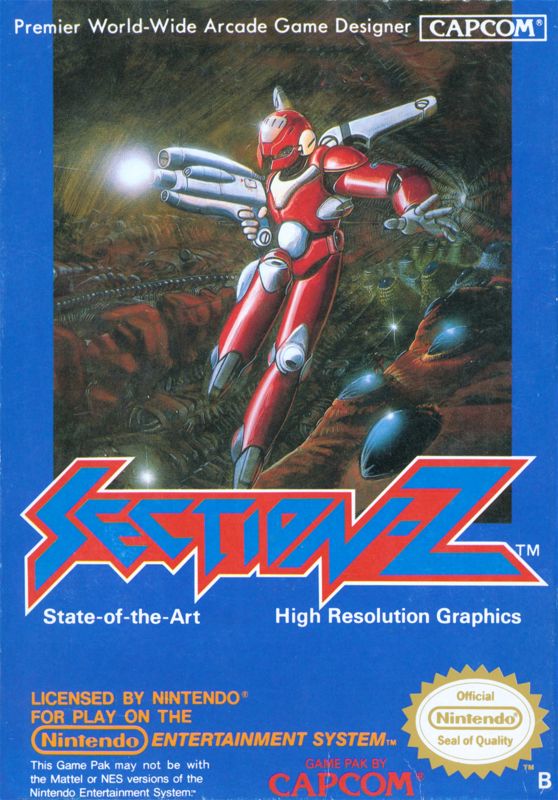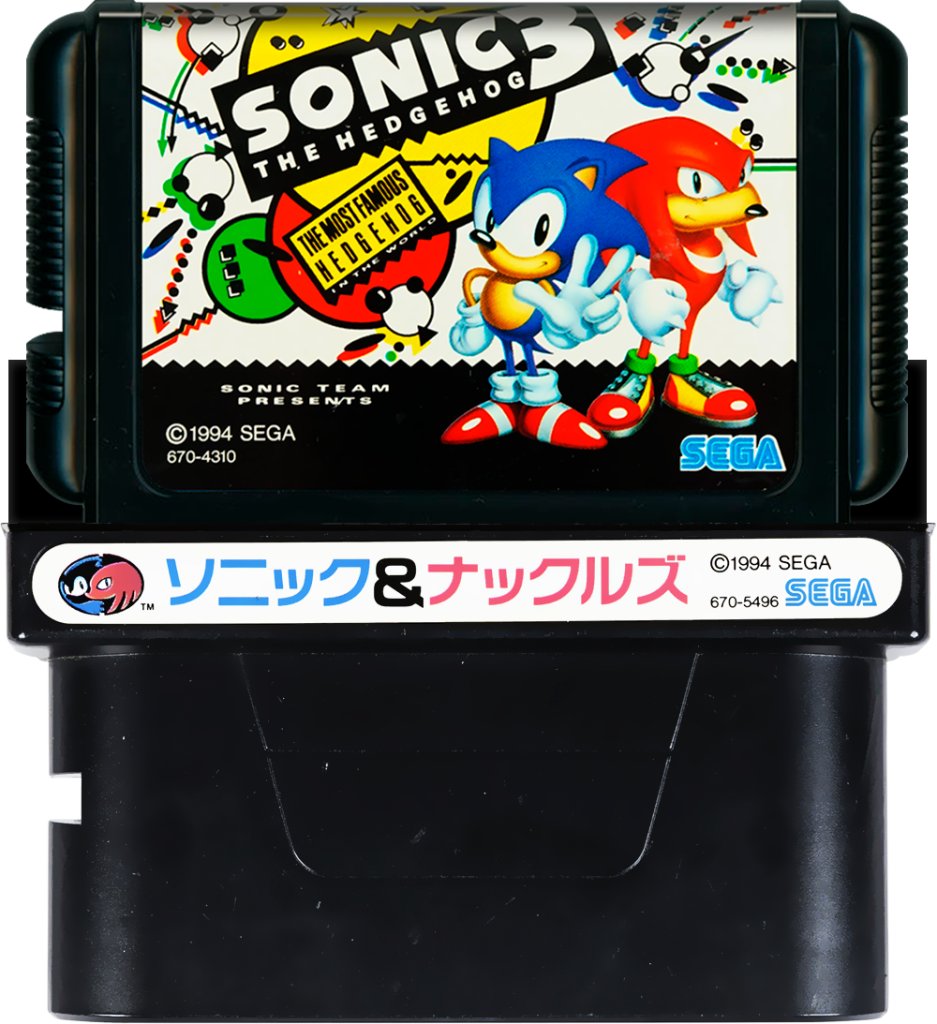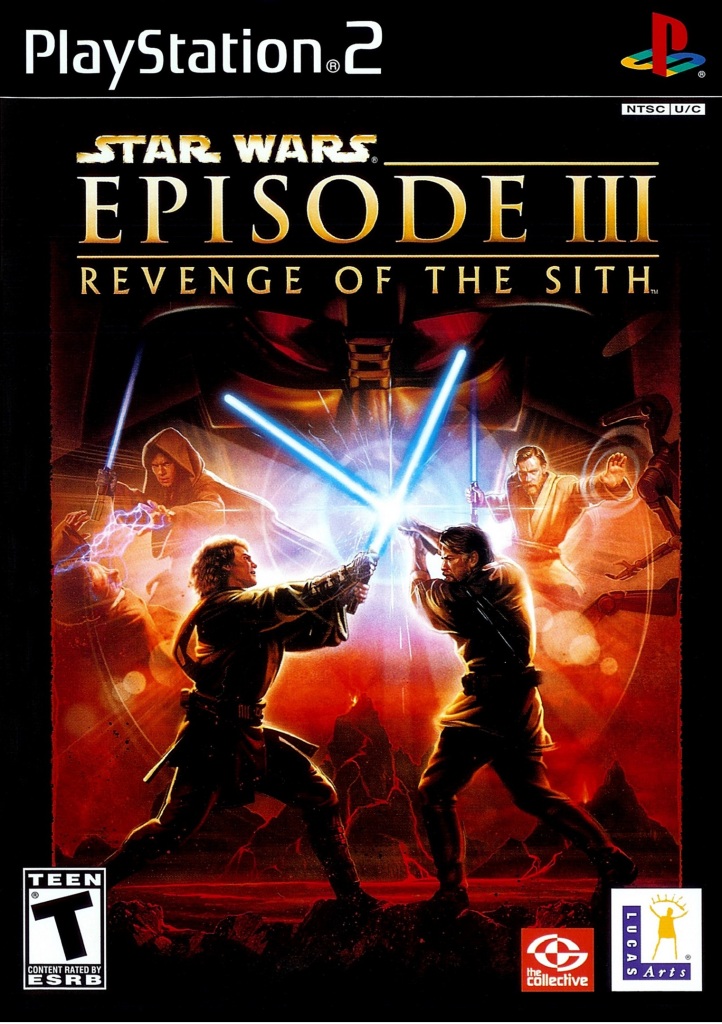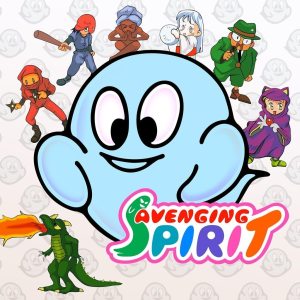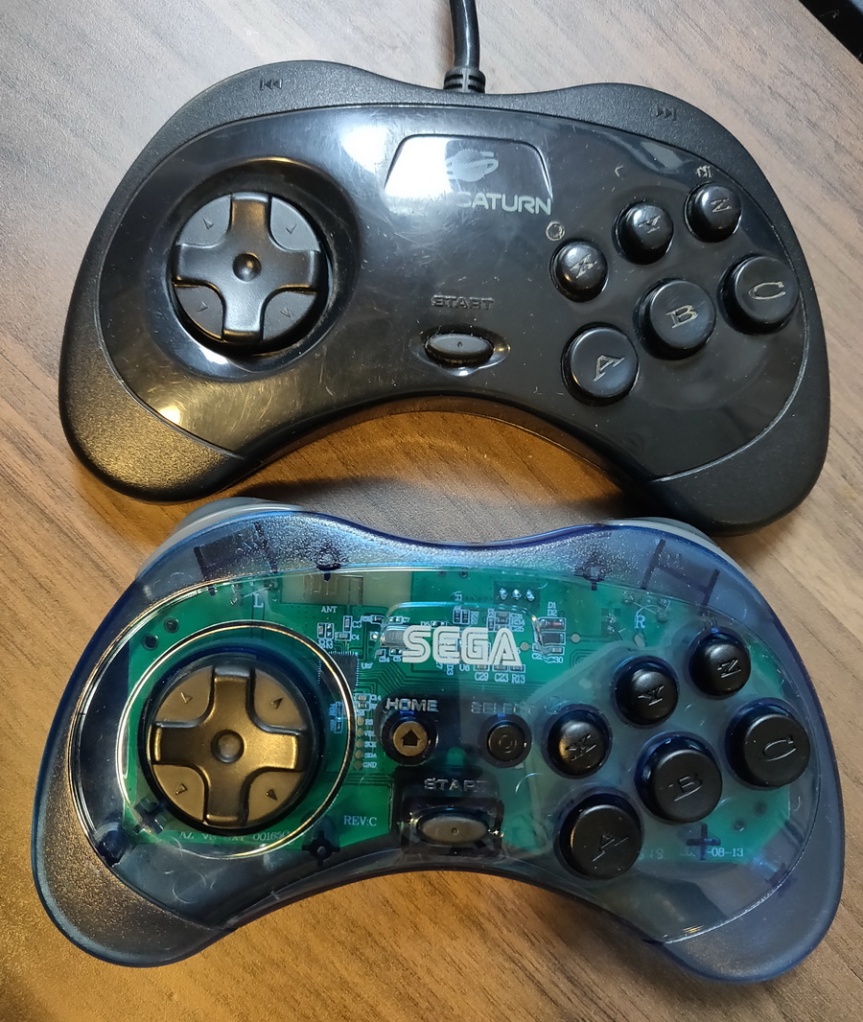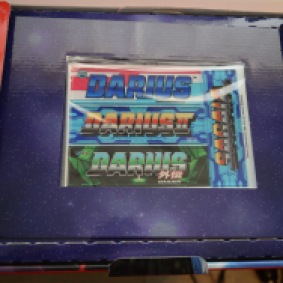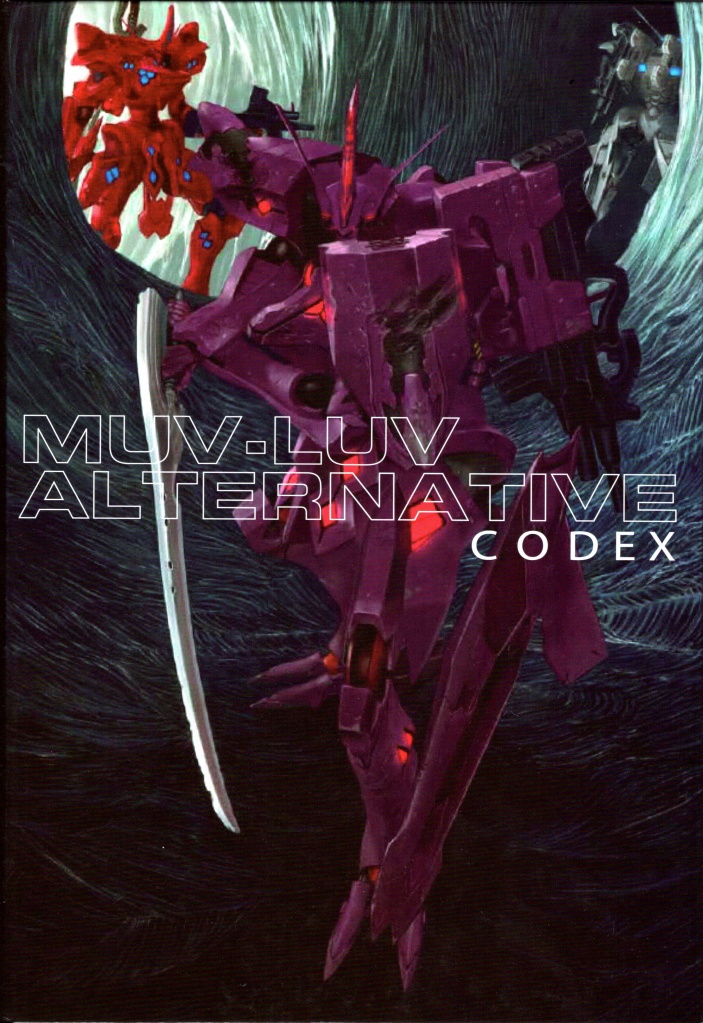I don’t feel 2023 was exactly a stellar year when it comes to games. Not too many games caught my eye, though one of them ended up on these lists. Last year I mourned how retro games are getting higher and higher in price, but now it’s standard for games to go for 80 bucks or so. Maybe I’m getting burned out on games finally, and need to find something else.
The rules for the Top 5; the game must have been on a physical media to count, 2023 must have been the year I’ve first time have had a copy of the said game, and the year of production doesn’t matter. There’s no particular order. In fact, I intentionally shuffled the order these titles just for the sake of it. I truly hope 2024 will net me overall better games, though none of these are slouches.
- Section Z 1987 Famicom Disc System, NES
When it comes to canonically great NES games, Section Z often gets overlooked. It was released in the same year as Mega Man and was followed by numerous other titles that are often cited as the best of the console. Nowadays Capcom gets some bad rap for not doing proper ports of their arcade titles to home systems, but most forget that arcade games don’t work at home consoles and home console games don’t work in arcades without some serious modification in how they work. Section Z is a consolized interpretation of the arcade’s core design, where the player travels through zones to destroy the final boss. In the arcades the player goes through a square from A to Z, hence the game’s name, but in the NES port, there are 60 of these zones. Hence, it would be more appropriate to talk about a version rather than a port, and the title is mostly a vestige.
What makes Section Z stand out then? The sheer size of it. Those 60 zones form a maze. Each zone ends with exit choices, outside a few key zones that serve as boss zones or have locked exits. The Western version has no save function either, so playing the game through from start to finish takes a small while. The game was originally on the Famicom Disc System in Japan. Just like most other FDS games that got a cartridge release in the West, some of the more advanced sound capabilities were cut down, and saving functionality was nixed. Thus the Western release of the game forces you to play in an unintended way. It has some infamy as being a hard-as-nails title, one of the titles that got the Nintendo Hard at some point. Still, I don’t recommend playing it with save states if you want to emulate the game.
Despite the game’s age, there’s nothing to complain about the controls. Sure it loses in terms of visual and sound flavour to some of the later NES games, but among its peers in ’87, it stands strong and largely unique title. It might share the labyrinthine nature with Space Hunter from a few years back, but most of the things it does are still unique to this day and a nice challenge for anyone. Section Z is the middle child of Capcom’s Jet-Pack shooter trilogy, preceded by Side Arms: Hyper Dyne and succeeded by Forgotten Worlds. Later down the line, the genre would be perfected by Battle Mania Daiginjou in 1993. Section Z is a game with a strong core design that hasn’t gone out of date.
- Burnout Revenge 2005 PlayStation 2, Xbox, 2006 Xbox 360
Burnout Revenge might not be the best game in the series, with the third game probably still being at the top of review lists. Not sure, that was a decade or so ago at this point. Nevertheless, there’s something in Revenge that’s lacking in most current racing games that I’ve given a go and that’s the sheer raging speed. It’s all about the dopamine kick; the flaming boost bar, the speed-blur effect, and the roar of the soundscape.
Of course, the game has to build itself properly. Challenges and races are peppered around just fine and mix up the play constantly. The racing would suck if the controls weren’t on-point, and ultimately that’s what makes the game so enjoyable. The racing is the meat of the whole thing. Everything in the game’s design comes together in these races, and only other Burnout games can deliver a similar experience. The Need for Speed series hits a different spot in the whole furious racing thing. Still, It was a joy to play a Burnout game I missed back in the day with a fresh set of eyes and just play a game that’s all about joy. Don’t seem to get that in any of the modern racing games per se, just Online-Only Services.
- Gigantic Drive / RAD: Robot Alchemic Drive 2002 PlayStation 2
We don’t get remote-controlled robot games often enough. They’re effectively a dead genre, mainly shared only by four games, all of which were more or less developed by the same people in the now-defunct studio Human, from which Sandlot would form from. The idea is simple but hard to replicate in video game form; you control the player character that has a remote control for a giant robot. You’re not the pilot of it, but a guy standing outside holding a controller for a massive hunk of steel.
The tension is on a whole different level compared to other robot games. When you’re in a cockpit, you don’t really care about the environment all that much, but when you’re the one standing in the middle of the fight, seeing buildings crumbling around you and finding a need to brave yourself into better positions to fight, it’s a whole different world. The scale of these fights becomes more apparent as you gaze up at these giant things. Robot Alchemic Drive makes you feel small and vulnerable, even when you’re standing on the shoulder of your giant robot. The player has to make the choice of either controlling their robot or controlling the player character. When you’re controlling the character, the robot is always inert, waiting for your command.
While each level has the same core play of mashing the giant enemy to bits, how you go about it matters more in some stages. You’re there to protect, not to destroy. Down the line protecting certain buildings becomes more important, and you might want to let other buildings be destroyed just to piss off your corporate rival. Still, nothing hits harder than ending a level with a tight victory, only to get a cutscene where one of the supporting characters says their apartment building got destroyed and she’s now homeless, trying to look for a new apartment and living in the office for the time being. You go back on your save and try that level again, trying to save as much of the city as possible.
The controls are like no other and dated at the same time. You don’t have camera control on the second stick, the camera always sticks to behind the player character. It’s almost by half-intention too as limited camera controls is a major part of the whole game. When controlling the mecha, you’ve got options for Easy and Normal controls. On Easy, the robots walk with the D-Pad and overall movement is easy. On Normal things get interesting, as D-Pad is used to move the robots’ upper torsos, twisting and bending like a boxer dodging punches. Shoulder buttons are for walking back and forth. Left buttons for the left leg, Right for the right leg. The sticks are for different kind of punches while face buttons are for weapons. Once you get into the game’s rhythm how to walk and when to attack with Normal controls, things click in place. The jank is still there, yet that jank serves a damn good purpose that modern gaming would not dare even think about in order not to inconvenience the player.
For a game that was made on a tight budget, there’s tons of attention to these things. RAD also runs for fifty or so levels, so the game does take a while to beat. Multiple playthroughs are also awarded due to different endings you can receive depending on actions in certain stages. They’re not exactly obscure actions either, but easily misseable.
The game became a small cult classic in the US. Sandlot’s other remote control robot games, Remote Controller Dandy SF and Tetsujin # 28 also came out for the PS2, largely reusing the same engine, slightly more refined. A lot fo the assets from RAD would be recycled into the first Earth Defense Force game they developed, and finding success in refining that series bit by bit. Should probably mention that RAD, or rather, Gigantic Drive is based on a cancelled Tekkouki Mikazuki game. It’s demo was included with the show’s soundtrack.
Sandlot and the ex-Human employees had a lot of love for the classical Giant Robot and it shows. Gigantic Drive is full of their particular kind of humour, but not for a second the delivery tries to be cheap. However, the American release Robot Alchemic Drive goes for a different effect with its intentionally shit dub. It might be fun for a scene or two, but it’s a massive negative on the game. Get the de-dub edition that’s floating around the Internet, it’s a superior version. Sandlot’s particular straight-laced humour would be served better down the line by dubs in Earth Defense Force, where some of the games don’t go through the enshittification via forced bad dub. Yes, these games are referencing the old monster and robot movies and shows, yet only the American dubs make fun of them.
Sonic 3 & Knuckles Sega Mega Drive 1994, Windows 1997
I missed Sonic the Hedgehog 3 back in the day. I picked that game up a few years back and kept it form the yearly lists as I waited a good deal to come up with Sonic & Knuckles. Still, I found myself agreeing that Sonic 3 probably is the best of the Mega Drive Sonic games even though the first game is a personal favourite due to lack of increased elements that would prop up later. I prefer three stages per Zone structure, for one. Locking Sonic & Knuckles to Sonic 3 of course creates the full intended game, and it’s a monster of a game. Massive in size of the locked-on cartridges and content.
Sonic 3 & Knuckles may put me off on how goddamn long some of the stages are, but at the same time that’s nothing short of impressive, and there’s only one stage that actually feels overly long. None of the rest are uninteresting, always offering something new and engaging a bit differently. The combined game is the culmination of everything learned from previous Sonic games put into action in a marvelous manner. I don’t think I need to say much about the combined game. It is a legendary thing in itself, and it being one of the best games of 2023 is a no-brainer.
- Star Wars Episode III: Revenge of the Sith PlayStation 2 2005
I wrote about Episode III a few months back, so it’s still fresh on my mind. While I haven’t really played it any since beating it and unlocking all the stuff, something in the back of my mind is niggling me to replay the game. It’d be too soon to get into it again, I’d just frustrate myself. However, jank as it may be in few places, after experiencing what some of the Triple A games 2023 had to offer, all that went away and I’m still left with a game that has an underrated fighting mode.
Among Star Wars games, there’s really nothing else like it. Sure, 3D action is bread and butter of the IP from the era, yet Episode III lands in the perfect middle of not being stupidly over-the-top like Force Unleashed but still mixing the play more than the previous titles. It sits in a perfect position between things. Nothing mind-blowing, but quality mostly across the board. An absolute gem worth adding to any library.
The Top 5 games that didn’t make the list
- Crazy Taxi 1999 Dreamcast, 2001 GameCube, PlayStation 2, 2002 Windows
I had to cut something out from the Top 5. I’ve played Craxy Taxi in the arcades and have spent countless of hours with the second game on the Dreamcast. After picking up Burnout Revenge, Crazy Taxi just didn’t cut it. It still offers one of the best driving game plays out there, but it has been outclassed. That’s not a shame, speed demon racing wouldn’t be the same without Crazy Taxi and it’s still a goddamn joy to play. However, just as I noted how some games don’t work so well at home, Crazy Taxi really works the best in the arcades. In the home console front, Burnout takes the lead. Maybe I need to build an arcade cabinet for my Dreamcast and have the control panel contain options for different controllers.
- Cyberpunk 2077 2020 Steam, GOG, PlayStation 4, Xbox One, Stadia, PlayStation 5, Xbox Series X/S
After playing Starfield some twenty hours and becoming increasingly bored, I wanted to turn my attention to the other RPG that got maligned, but supposedly largely fixed with patches. Cyberpunk 2077 started out strong, and I found myself invested in Night City in general. If I had a physical copy of the game and not a GOG installer, the game would be in proper Top 5.
I have to say that I did like the Skills and Perks system better before 2.0 patch. The updated system requires min-maxing and sticking to one style of play, whereas previously I could make a character that was a jack-of-all-trades. I’m not fond of min-maxing in general or gaming the systems themselves. I like the variety of being able to most thing competently in CRPGs like this, and now having to stick single builds per playthrough is a personal issue.
Nevertheless, Cyberpunk 2077 ticked all the boxes I wanted from a CRPG. Generally a game for the ages and gets the ass-slap seal of approval.
- Gunhed 1989 PC Engine
Gunhed is based on a movie with a same name. There’s also Gunhed on the Famicom, which is a strategy game. PC Engine Gunhed, or Blazing Lazerz if you’re so inclined, is all about what PC Engine does best; shooting. It’s also one of the games that sold people on the system back in the day and has been cited as one of the shooting games out there. I don’t really agree, but that’s only because there’s so much competition in this era for that title.
Gunhed‘s biggest flaw is in its pacing. The first few stages don’t exactly grab you, making it a blasé introduction. In those two stages the chunky graphics become unwieldy to the eye and the music feels lacking in energy. It’s like a half-polished gemstone. Section Z still stands rather unique game, but whenever I played Gunhed I found myself wanting to pop Super Aleste into my SNES. When you’re picking a SNES shooting game over a PC Engine one, there’s some serious trouble in paradise. A classic game, overshadowed by everything else the developers did after.
- Robocop: Rogue City 2023 Steam, PlayStation 5, Xbox Series X/S
As Sony is making PlayStation obsolete with constant ports and lacklustre service, and Microsoft has effectively given Windows users access to Xbox titles, I haven’t found myself in any need to get their latest consoles. Thus, Robocop: Rogue City shares the same fate as Cyberpunk 2077 and as digital download gets a spot in the recommended-but-not-top-5 games.
All the hubbub surrounding the game, from its accurate portrayal of Robocop‘s setting to surprisingly satisfying shows that you don’t need multimillion dollar budget to net what is one of the best games of 2023. Even the mundane shit you need to do during investigations feels substantive as you’re doing it. It’s part of what Robocop would do as a police officer in the field.
The writing hits the nail with the tone of the first movie. While the material is good, Peter Weller elevates it. He understands what make Robo, or Murphy tick, and his delivery is not sold short. This is where licensed games usually have failed, but Rogue City just does it right.
A great game worth picking up if you’re feeling like turning some perps into bloody mess, or just want a worthwhile Robocop sequel.
- Earth Defense Force 5 2017 PlayStation 4, Steam
After beating the game three times, I think I prefer 4.1 more. Cosmonaut variants and the Rollers just take the enjoyment out of it. Otherwise yes, each EDF game builds on the previous one and is marginally better, and if you’re thinking of picking one of these games up, just go for EDF5 or wait for the sequel to launch in the West sometime later this year.
Still, the game’s a joy to play. Easy to pick, infuriating to beat on harder difficulties. The DNA inherited from Robot Alchemic Drive is still visible everywhere in the game, especially when you get to pilot Barga, the giant robot of the game. I swear some of the attack animations look like they’ve been recycled from RAD.
Earth Defense Force 5 gets better with friends though. Single-player is fun and all, but getting the living reactions out of people and helping your mate out of a pinch is the sort of salt a massive game like EDF5 needs. While the story of a rookie soldier becoming one of last standing humans and defeating the creator of mankind is nice, its the stories you make with your companion players online or split-screen where the game shines the best.
The framing story of the game is told via NPC radio chat, and paints a world filled with desperation against the alien threat. The English dub is overall decent and doesn’t veer too much from the Japanese original, more often than not retaining Sandlot’s peculiar dry and straight humour. Some of dubbing sounds like it is intentionally bad, but at the same time the voice actor might just be someone from the office.

